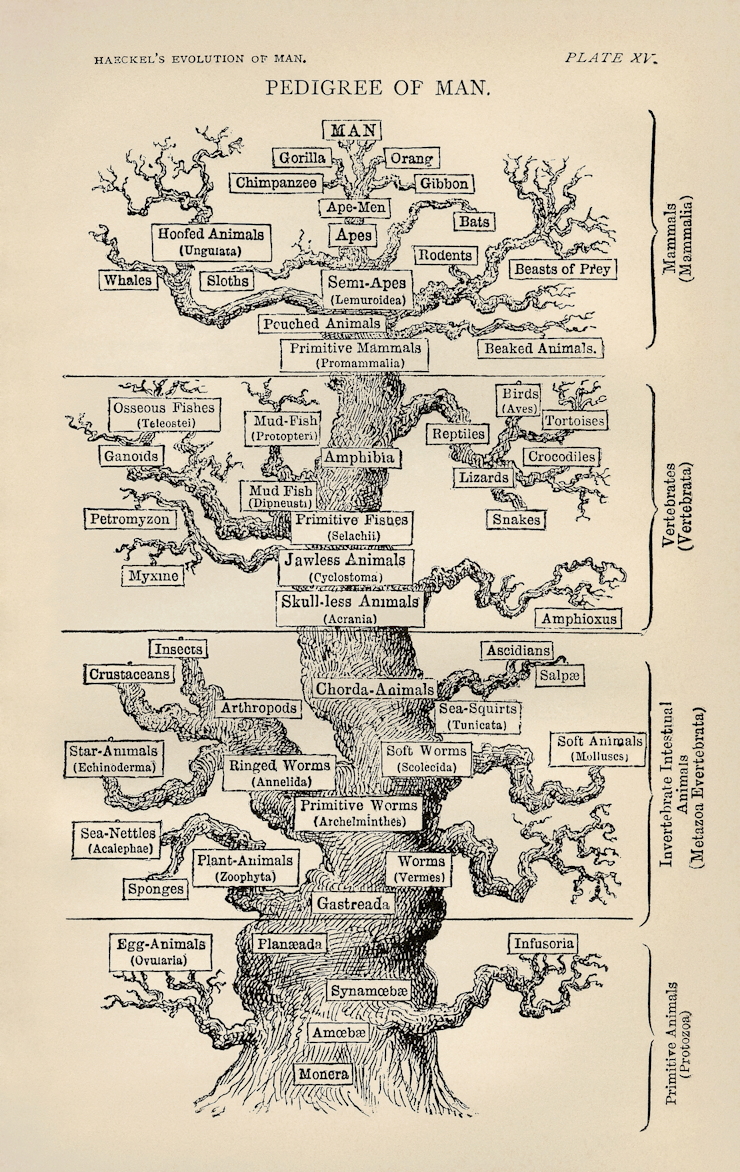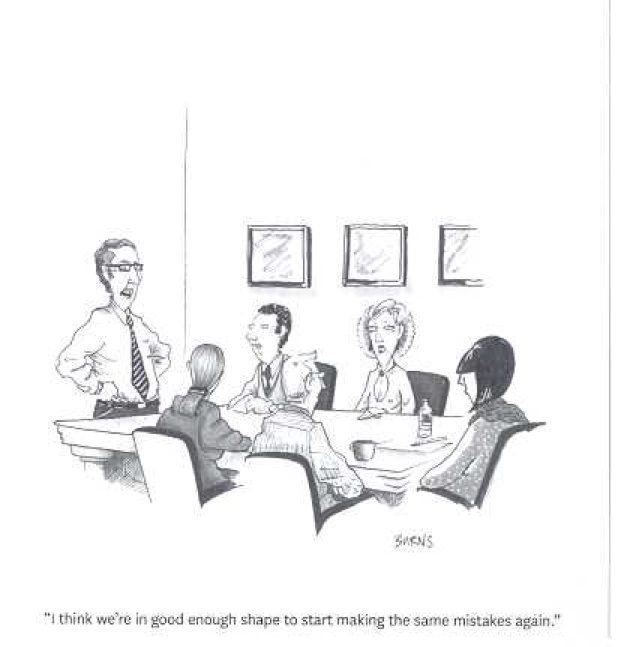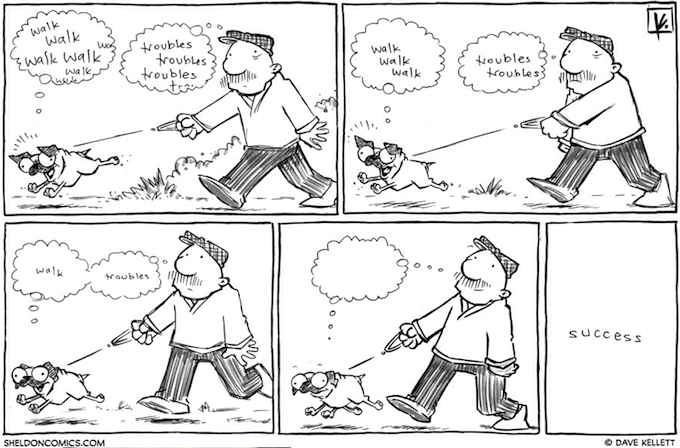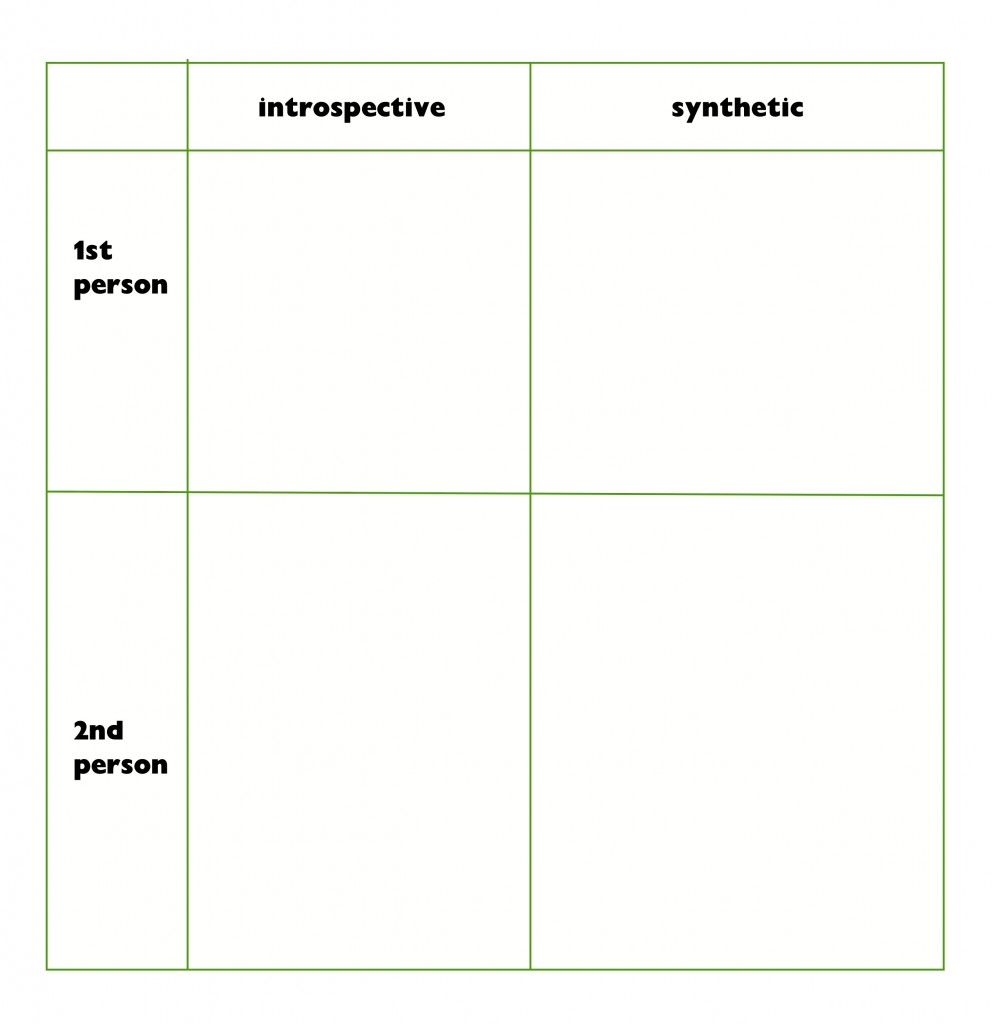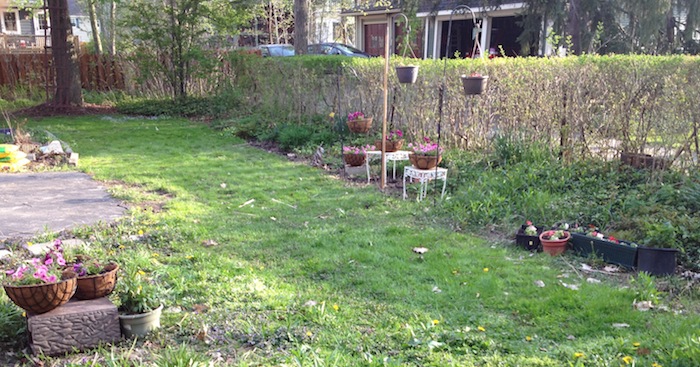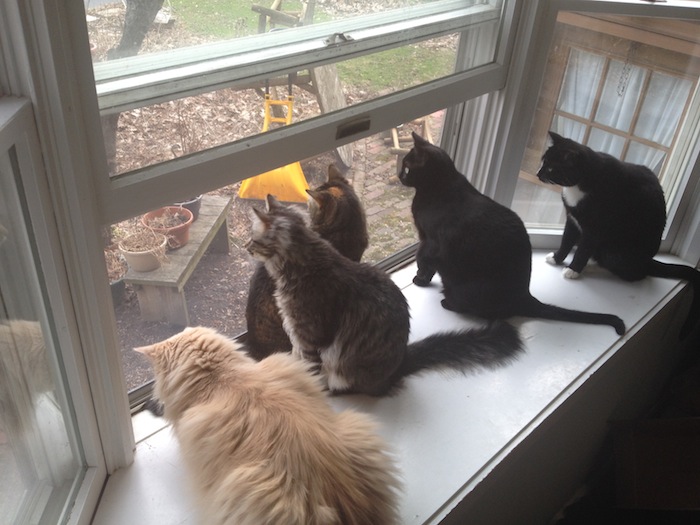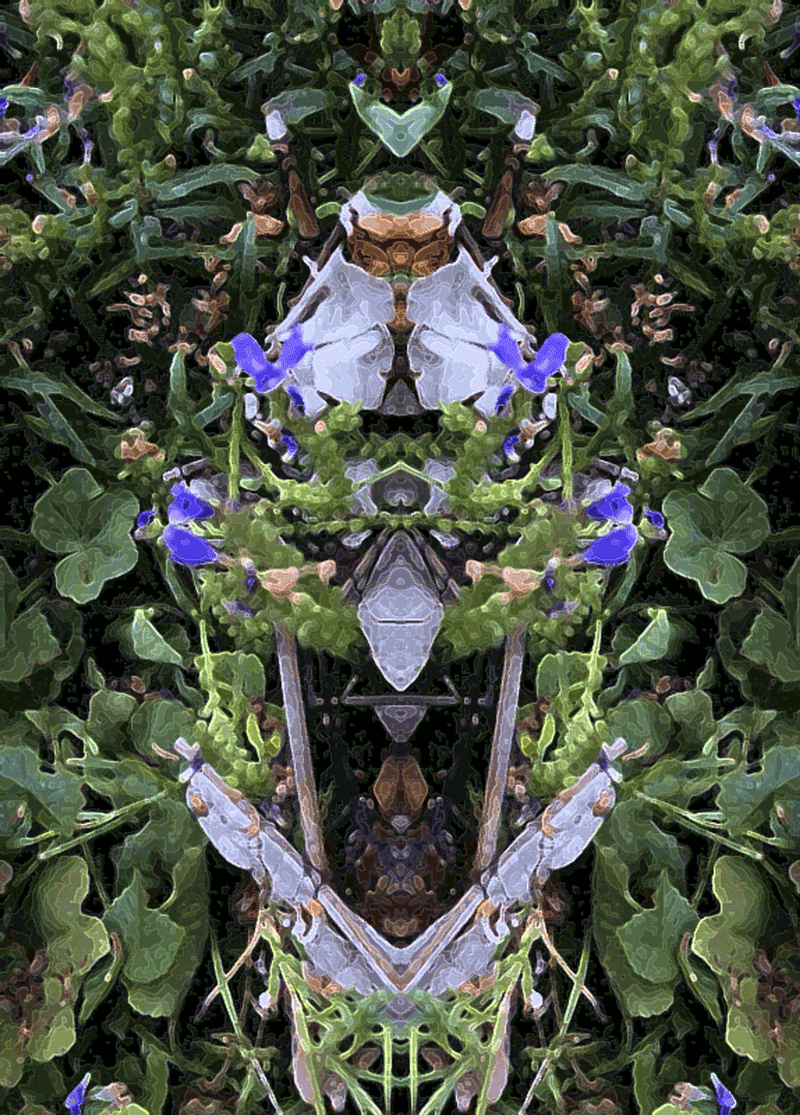Monthly Archives: May 2014
100 trillion * 100 trillion
Filed under adult learning, science
Happy Birthday Gilbert Shelton
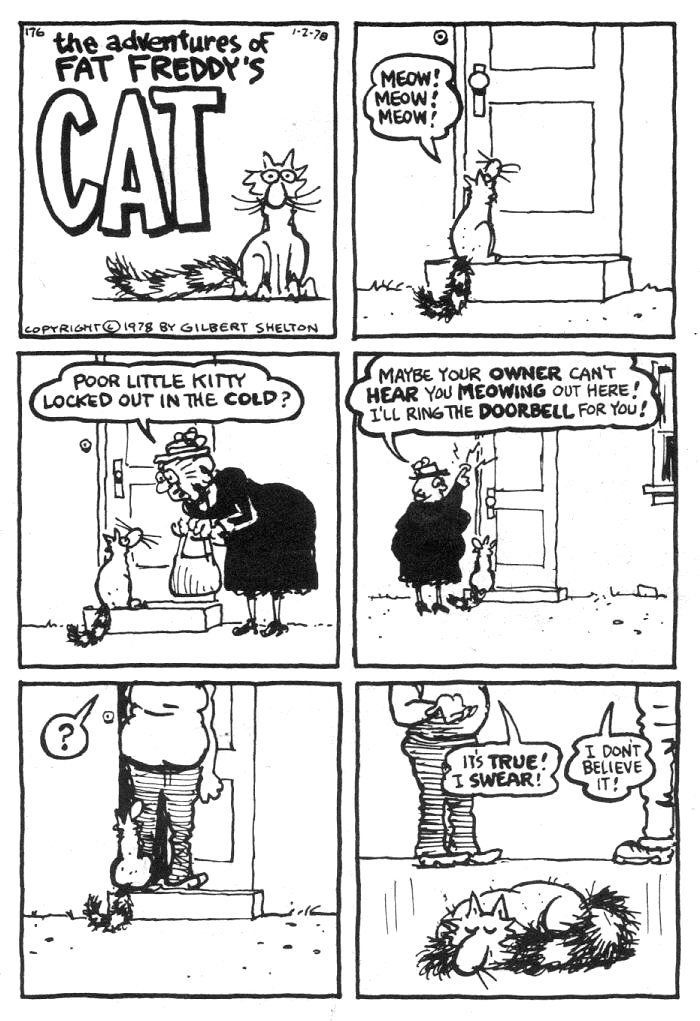
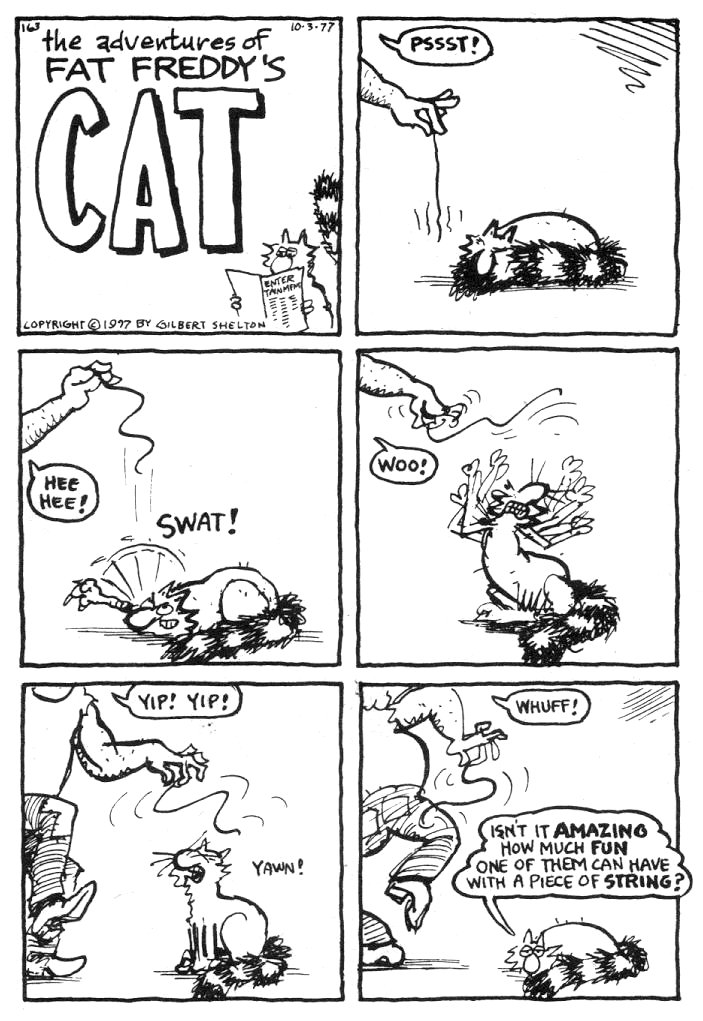
Before Garfield, Fat Freddy’s cats.
From Fat Freddy’s Cats, Volume 4 – Gilbert Shelton
In Conversation from The Comics Journal
Filed under humor
Relativizing, Dancing Around Synthesis
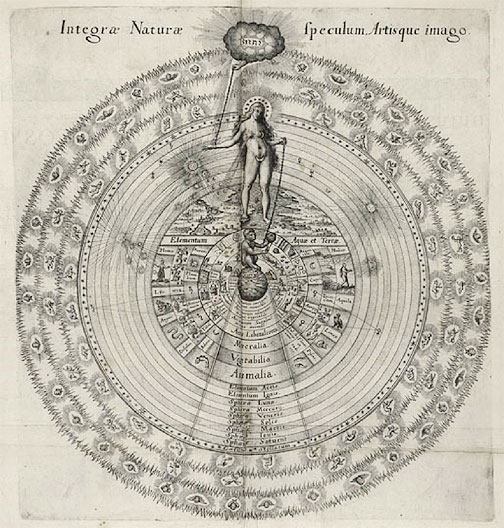
Paul Kugler came up in a conversation about the problem incurred by supporters of Analytical Psychology as those same supporters age without, in effect and in actuality, having created a socio-cultural succession plan. This leads to a mild synchronicity when I search for Kugler’s ideas and run across very resonant materials; and I mean here personally resonant.
[Paul Kugler tells:] The story is set in a medieval village where the villagers are seated during meetings according to their social rank. The person who holds the highest rank rakes the highest seat. One day the villagers are gathering and the prime minister is setting in his seat when a beggar wanders into the village and takes the seat just above hem. He is, of course, very disturbed by this, and asks the beggar just “ who do think you are to take that seat? Do you think you are the prime minister?” The beggar thinks for a few minutes, and says “No”. So the prime minister asks, “Well, do you think you are the king to take that seat?” The beggar thinks again for a few minutes and replies again “No”. So the prime minister asks “Well then, do you thing you are the prophet to take that seat?” The beggar looked at him and replied, “No.” This time the prime minister asked if he thought he was God to sit there. And again the beggar replied “No.” At this point the prime minister was very upset and he exclaimed “But nothing sits above God”, to which the beggar replied. “Yes, and that nothing I am.”
(Note: Nothingness is equivalent to Non-duality.)
Here’s the larger context of the story, excerpted from the full interview.
Editor: What do you mean by ontological?
Kugler: One’s functioning definition of reality. If you change your working definition of reality you run the risk of precipitating a psychotic reaction. Psychosis, as you know, is a disturbance of reality. Psychotic episodes are often accompanied by religious conversions. I have known clinical cases where the patient has undergone multiple conversions during a single episode. Because of the profound psychic disturbances associated with shifts in our belief systems., the bedrock or our personality. Jung was very apprehensive about Westerners taking on Eastern belief systems. When you take on those patterns of thought, you alter your definition or reality
Editor: There is an experience that precedes the verbalization. An experience that is without verbal labels. I think that in attempts to construct that experience verbally, what’s happening is we are finding that the Eastern constructions fit the experience better than the Western constructions, although I think they’re the same. The experience is fundamental, the origin. The Eastern set of symbols, set of concepts, are a better expressions of experience.
Kugler: How do you determine what is “better”?
Editor: It’s the sense of a good fit. I have an experience of lucid dreaming, alright? This is an experiential reality. There’s a verbal element to it: I know I am dreaming, and that it is verbal. It’s quite verbal. It’s a sentence that is said in the dream. But, there’s an experience without verbal labels that is pervasive, deep, profound.
Kugler: I have a sense of what you are referring to, but I have a lot of questions as to how you are going to escape the bias imposed on our understanding by language. The nature of the relation between lived experience and its representations is very complicated. The representational level has a significant influence on how we construct and speak about “reality”. For example, in the nineteenth century the linguistic metaphors and narrative structures we used to construct our discourse were quite different from today. The master narratives of the past century were influenced by the Victorian novel, on the one hand, and the Newtonian fantasy of cause and effect on the other. Much of science is still modeled on these master narratives: begin with a problem or crime, casually follow the clues backward in time through a series of ups and downs in the plot, the parapetia, until you find the cause of the problem or the person “who done it”.
Hunt: Freud’s case histories?
Kugler: Yes, Freud’s case histories. This master narrative dominated 19th and early 20th century literature and science. And in some areas it still is in use today. At the turn of the century James Joyce, almost single handedly, introduced a new form of the novel and with it came a new master narrative. In writing Finnegan’s Wake and Ulysses, he created a novel that could not be read only once. The problem with the Victorian novel was once you know “who done it” the plot was not so engaging. Joyce constructed a novel in which the clues given at the end only made sense at the beginning during the second and third readings.
Editor: A good movie’s that way.
Kugler: Also, Joyce plays so extensively with the polysemic quality of language through endless puns, that every time you reread the text there are shifts in the meaning of the novel. The construction of the narrative is not casual, nor does it have a singular meaning of definite perspective. Joyce was beginning to develop what we now recognize as the post-modern novel. In the post-modern novel the narrative line is not characterized so much by causal connections and plot developments, as it is by ontological shifts. For example, the structure of a post-modern novel might be something like this: As the story goes, you are having dinner with Harry Hunt and Paul Kugler, interviewing them for a journal article. The interview focuses on dreams, question of lucidity, self-relativity, the problems associated with Westerners taking on Eastern belief systems and so on. Part way through the interview you suddenly realize that you are actually dreaming and that your interview with Dr. Kugler on lucidity in dreams is itself only a dream. At this point in the dream you are asked by Kugler the following questions: What will happen to your dream people, the little people as Jung called them, if through your meditation practices you succeed in emptying your dreams of all content? What will happen to this dream content? What will happen to this interview? You suddenly awaken, confused and uncertain as to whether you actually interviewed Kugler of whether it was only a dream. As you struggle with this question you suddenly realize that you are still dreaming…
Now, this type of narrative construction is characteristic of the post-modern novel. Ray Federman’s Double or Nothing and Two Fold Vibration are wonderful examples of this style of composition. The self-reflexive structure with its continuous ontological shifts is very different from the Victorian with its causal structure, stable meaning and singular reality. In many ways the post-modern novel is similar to Japanese movies with their de-emphasis on plot and subtle concern with differentiating the various levels of reality.
As we become more aware of the problems of ontology and the difficulties involved in differentiating levels of reality, we see a greater similarity between our lived experience and the philosophical narratives of the East. Whether we understand the lived experience of the Easterner is another question. There are many ground principles in the Eastern systems of thought that are alien to the Western mind.
Kugler: We, for example, tend to ground our systems of thought on something while the East tends to ground its belief systems on nothing. The idea of using “nothingness” as a first principle is extremely difficult for many Westerners to grasp.
There’s a wonderful Sufi story that plays with the tension between the primacy of a known god-term and nothingness. The story is set in a medieval village where the villagers are seated during meetings according to their social rank. The person who holds the highest rank rakes the highest seat. One day the villagers are gathering and the prime minister is setting in his seat when a beggar wanders into the village and takes the seat just above hem. He is, of course, very disturbed by this, and asks the beggar just “ who do think you are to take that seat? Do you think you are the prime minister?” The beggar thinks for a few minutes, and says “No”. So the prime minister asks, “Well, do you think you are the king to take that seat?” The beggar thinks again for a few minutes and replies again for a few minutes and replies. “No”. So the prime minister asks “Well then, do you thing you are the prophet to take that seat?” The beggar looked at him and replied, “No.” This time the prime minister asked if he thought he was God to sit there. And again the beggar replied “No.” At this point the prime minister was very upset and he exclaimed “But nothing sits above God”, to which the beggar replied. “Yes, and that nothing I am.”
Editor: I love it.
Kugler: it’s a very complicated ending because you can sense how language catches us up in its internal tension between referentiality and significance.
Hunt: In the Tibetan Buddhist tradition I think they’re quite eager, at least now, to press on people the term openness for emptiness or nothing. In other words, if it has a referential sense, it’s a kind of openness. It’s the space that’s filled by structure. The difference, perhaps, between the Eastern relativism and the Western relativism in that in that oscillation between open possibility and the structure that are given birth to the Eastern oscillation would have you end up on the side of the bare awareness.
Kugler: The Eastern relativity ends up with the unknown, while Western relativity ends up with the known.
Hunt: So playing with structure, with the accent on structure, rather than the accent on detachment. Although both are necessary.
Kugler: I’ll tell you two stories which illustrate my point. The first story reflects more of the modernist attitude, which we might call the Western attitude towards relativity. And the second is closer to the post-modern and Buddhist attitude. The first story Jung was very fond of telling as an illustration of his concept of the Self. The story illustrates the function of a transcendental meaning (ref. morning lecture) in relation to relativity. The story is found in the 18th Book of the Koran and begins with Moses meeting Khidr (The “Green One”) in the desert. The two wander together for a while and Khidr expresses his fear Moses will not be able to witness his deeds without judgment and indignation. Khidr tells Moses that if he cannot trust and bear with him, then Khidr will have to leave him. Moses agrees.
After a short time they come upon a poor fishing village where Khidr sinks the fishing boats of the villagers. Moses is upset seeing this, but remembers his promise and says nothing. A short time later they arrive at a decaying house of two pious young men, just outside the wall of the city of non-believers. Khidr goes up to the city wall which is falling down and repairs the wall, rather than the house of the two believers. Again Moses is disturbed by Khidr’s actions, but says nothing. The story continues in this fashion until finally Moses sees something so intolerable that he can no longer hold back from making a comment. This causes Khidr to leave. But, before his departure, Khidr explains why he acted as he did. In the first instance, pirates were on their way to steal the fisherman’s boats and by sinking them, Khidr actually saved the boats from being stolen. In the second instance, by rebuilding the wall of the city of non-believers, Khidr actually saved the two young men from ruin, because their life fortune was hidden under the city wall and about to be revealed and stolen. As Khidr left, Moses realized that his moral judgement and indignation had been too hasty and that Khidr’s actions, which at first he interpreted as bad, were in fact, not.
The second story I would characterize as a narrative representing the Post-modern problematic. It’s an old Taoist story about a farmer who has a son and a horse. One day, the farmer goes outside to find that his only horse has run away. It’s a small town and the neighbors hear about it and come to visit that evening and tell him what a terrible thing it is that happened. The farmer listens to them, thinks for a while, and responds, “I don’t know.” The next week the horse runs up into the mountains and takes up with a herd of thirty wild horses. After running with them for a few weeks, the farmer’s horse leads the wild horses back to the corral. The farmer goes out and finds he now has thirty-one horses and closes the gate. Word gets out and the neighbors come to see him that evening and tell him how wonderful this is. The farmer thinks for a long time and says “I don’t know”. The following day his only son goes out to tame the wild horse. He climbs on the first horse and is thrown breaking his leg, so he can’t work. The neighbors hear about this and come over to the house that evening and tell him what a terrible thing this is. The farmer thinks for a while and responds “I don’t know”. The next day the country breaks out in a war and the man in charge of draft inscription arrives to draft the son to the front line where he probably will be killed. He finds he has a broken leg and tells him he does not have to go to war. And the neighbors hear about this and come over that night and tell the farmer how wonderful it is that his son does not have to go to war. And the farmer responds “ I don’t know”.
Both stories relativize through recontextualization, but where they differ is that the first story has a personification (Khidr) who “knows” the future, while in the second story there is only “not knowing”. There is only the farmer who questions the neighbors’ tendency to fix a specific interpretation to an event. The two stories present very different ways of relativizing.
Filed under analytic(al) psychology, experiential learning, sufism
Sepia Invitees

The Set-Up – the ongoing model two-master being slowly integrated into the garden. It’s been there for over a year. As a photographic subject, it has been the source material of a handful of intriguing pieces in my ongoing Symmetry Series.
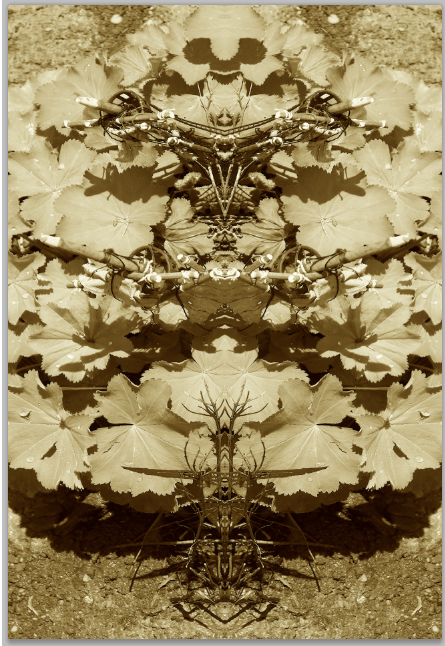
Sepia Invitees 2014 -S.Calhoun – 19″x13″
This is a spooky piece and I’m on the fence about whether or not I will run it through the large format printer.
Filed under visual experiments, my art
I and I Fairly Sure Mulder. . .

Gizmodo: The FBI Is Struggling to Hire Hackers Who Don’t Smoke Weed
And, FBI unable to qualify what are the qualities of a ‘most excellent’ hacker.
Filed under cultural contradictions, current events
Teaching Cartoons: You Have to Have Faith. . .
(After all, the underlying social motivations haven’t changed at all.)
(Better safe than sorry.)
Bonus reading: Tradition in a Free Society: The Fideism of Michael Polanyi and the Rationalism of Karl Popper
by Struan Jacobs (pdf)
Filed under adult learning, humor
Calvinist Influences on Conceptions of Happiness
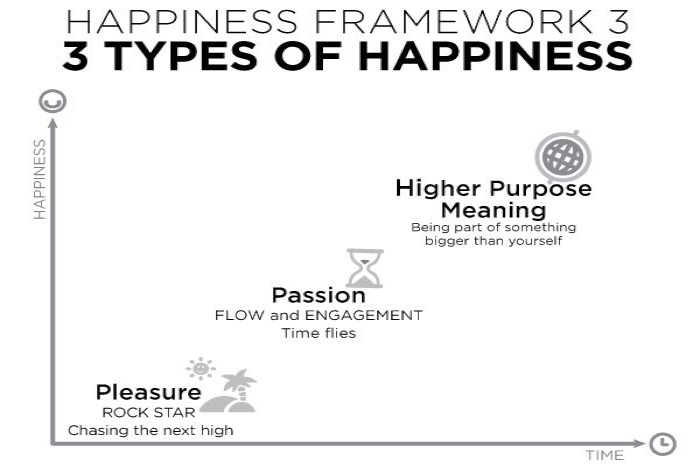
(This is from my collection of weird graphics purloined from google image searches.)
Never mind the apparent category error given a time scale of one sort and a positional reference–‘time flies’–to a time scale of a different sort, this graphic offers a principled reduction in its second order, and, then offers an ethical injunction in its third order.

What connects happiness with another ethical injunction, one that could be implied by my new version of the graphic. The injunction is attributed to Gautama Buddha: “Do not dwell in the past, do not dream of the future, concentrate the mind on the present moment.”
Filed under adult learning, self-knowledge, zen
Surf Forever
One Hour of San Diego Surfing Time Collapsed: San Diego Study #4 from Cy Kuckenbaker on Vimeo.
This video was created from one hour of source footage shot from a bluff in San Diego the morning of Jan 21, 2014. I was interested in exploring the manipulation of water and to see how the movements and patterns from surfing interact. For more information about this video please visit cysfilm.com and MOPA.org
Shot on a Canon C100 + Atomos Ninja in CLog, with a Canon EF 100-400 f/4.5 L lens at 24p. The post work was done in After Effects.
Thanks Cy.
The once a summer–posted to the explorations blog–surfing video, posted annually because I was an enthusiastic goofy-footed surfer during the summers of 1968, 1969 and 1970 at, respectively, the breaks of: Oahu, Virginia, South Carolina. Then, crossing it off my bucket list, I soon became a long-haired hippie.
Filed under personal, visual story
Empiricism
My thesis is that if we start with the supposition that there is only one primal stuff or material in the world, a stuff of which everything is composed, and if we call that stuff pure experience, then knowing can easily be explained as a particular sort of relation towards one another into which portions of pure experience may enter. The relation itself is a part of pure experience; one of its terms becomes the subject or bearer of the knowledge, the knower, the other becomes the object known. This will need much explanation before it can be understood. The best way to get it understood is to contrast it with the alternative view; and for that we may take the recentest alternative, that in which the evaporation of the definite soul-substance has proceeded as far as it can go without being yet complete. If neo-Kantism has expelled earlier forms of dualism, we shall have expelled all forms if we are able to expel neo-Kantism in its turn. William James from What Is Consciousness?
Filed under philosophy, William James
Shell Game
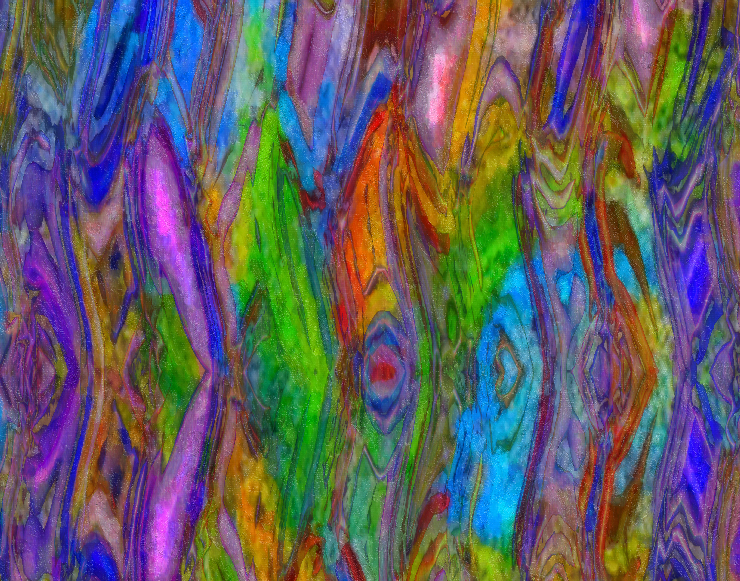
Shell Game – 2014 – 14 x 11 – digital proof for dye giclee
Filed under visual experiments, my art
Turn Out
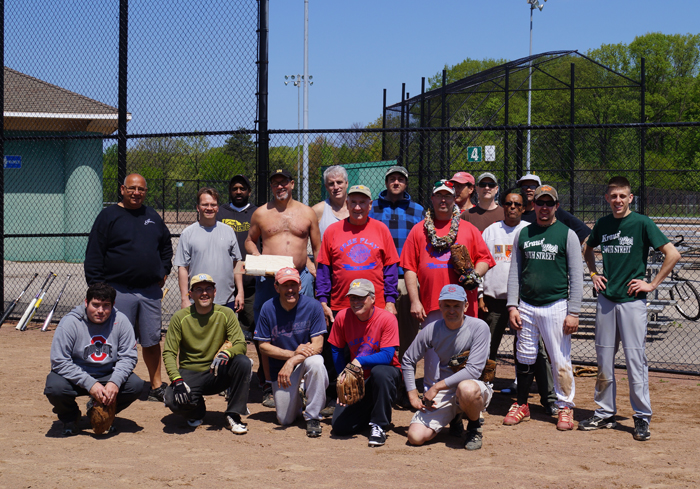
The photographer was player number twenty. Ringers Adam and Matt stand out because of their uniforms.
Free Play Softball enjoyed its first ideal turnout of the season. Twenty came, twenty played, and, hopefully twenty will return next week. As a group we have long been resourceful about our numbers. Everybody plays. This is true when the group obtain epic numbers–say, twenty-five or more–and, also, we’ve figured out how to configure a game when half the ideal number, ten, show up.
But, twenty is ideal.
This year, so far, we’ve played on field #8 once, choosing on other weeks to move our diamond away from the treacherous swamp formed by poor drainage behind the path from second to third base. This week we also adjusted our location and played on the fenced-in league field #3 adjacent to our scraggly open grass field, #8. It’s a fast, unforgiving infield attached to a capacious outfield that goes up hill.
In the past we’ve opted not to use the so-called pro field because it really demands keen infield play on its dirt infield. The consensus has been: we’re not really up to the challenge. But, once a year a group with a permit takes over the hallowed diamond and we make our way to a normal field, with benches, and fences, and puffy bases. This week two ringers showed up and were convinced to play in our grizzled circus.
The high point for me was the return of Dave B. His shoulder on the right side underwent some off-season carving, so I challenged him as to what position he thought he could manage throwing underhand. I put him out at pitcher and he did really well. His team moved him to second base–he’s an ace fielder–and he quickly generated an effective sidearm throw. And, testing his bony geometry with bat in hand he slapped hits around the field as if a surgeon hadn’t paid him any off season visit at all!
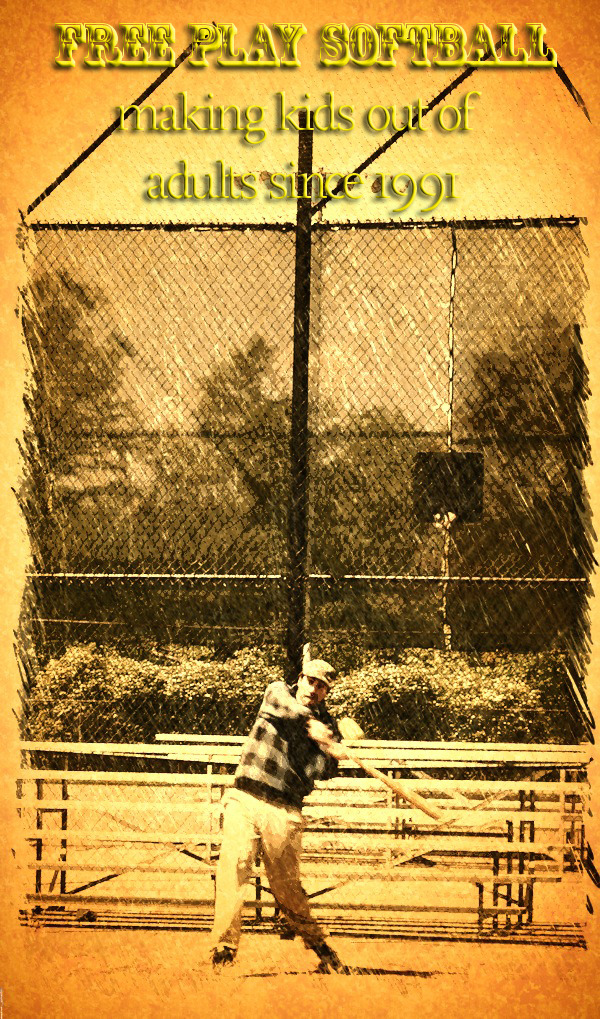
Once the game began all tools remained in the toolbox.
Authoritative Interventions
Prescriptive – You explicitly direct the person you are helping by giving advice and direction.
Informative – You provide information to instruct and guide the other person.
Confronting – You challenge the other person’s behavior or attitude. Not to be confused with aggressive confrontation, “confronting” is positive and constructive. It helps the other person consider behavior and attitudes of which they would otherwise be unaware.
Facilitative Interventions
Cathartic – You help the other person to express and overcome thoughts or emotions that they have not previously confronted.
Catalytic – You help the other person reflect, discover and learn for him or herself. This helps him or her become more self-directed in making decisions, solving problems and so on.
Supportive – You build up the confidence of the other person by focusing on their competences, qualities and achievements.
John Heron’s Six Applications for Intervention
Filed under experiential learning, play
Dance A Round
Sema No. 1 – from a photograph (2014, S.Calhoun)
Paradox
Paradoxes: best wakefulness in sleep, wealth in having
nothing, a pearl necklace
fastened around an iron collar. Fire contained in boiling
water. Revenues growing from
funds flowing out. Giving is gainful employment. It brings in
money. Taking time for
ritual prayer and meditation saves time. Sweet fruit hide in
leaves. Dung becomes food
for the ground and generative power in trees. Nonexistence
contains existence. Love
encloses beauty. Brown flint and gray steel have orange
candlelight in them. Inside
fear, safety. In the black pupil of the eye, many
brilliancies. Inside
the body-cow, a handsome prince.
Rumi, version by Coleman Barks
Filed under adult learning, poetry, Religion, self-knowledge
Rabbit Holes
I’ve been reviewing current so-called Integral literature over the last few weeks, but it was Ken who had much earlier got me going back toward that development dynamic when I toppled over ‘into it’ in the intellectual sense from our discussing Giegerich’s critique of classical Analytical Psychology.
I’m not an Integralist. Understanding in a meta-systems sense that the best and the lesser are sometimes necessarily retained, and, transcend-and-include turns out to be an arbitrary imposition if it then, at times, results in the baby following promptly the bathwater, highlights the fundamental points of distinction between my messy/rigorous viewing site and the seemingly reductive AQAL territories.
I note as much when I peruse the neatly reductive diagrams that have been recently multiplying; and most strike me initially to be graphical, intellectual kitsch. But then I get out my scraper.
I’d be very interested in scratching beneath the surface of the presumably poetical ” ‘live eros,’ springing forth from chaos.”
What a human system apparently is (to a degree mediated by a, or several, or all domains,) is what he or she entails, and what he or she can possibly entertain, and, so, what I and you feel, and, that which I and you may create from the, my/your, our, current entailment, and, also, how future potentials are foresight worthy. In a nutshell, this is a (my own,) provisional perspective that, at least and as far as I do foresee, is able to encompass just about any ol’ additional perspective which could be tossed toward it, at it, into it, or, even land neatly and dynamically as a tangent, and with enough energy in such a circuit to cause further differentiation and a foundation for adaptation or sudden evolution.
Development is often non-linear.
Horizon is the root of horizontal.
We, you and I, are able to discuss the future. (Maybe this is among the most singular human features.)
The Map never gets close, and that it gets closer is an illusion provided by what I term the sunk perspective. In noting this, at the same time, all sorts of adventurous turns may tumble out of the dynamical interplay caused by being gripped and enthused by the current sunk perspective! Such perspectives then become relativized–and this is may be much different than being transcended and included.
Someday my squaring of radical empiricism and human (or social,) cybernetics will fall down the hole too.
If you should speak and try a hundred ways to express it,
‘Tis useless; the mystery becomes no clearer. …
A horse of wood is useless on dry land,
It is the special conveyance of voyagers by sea.
Silence is this horse of wood,
Silence is the guide and support of men at sea.
This Silence which causes you annoyance
Is uttering cries of love audible to the spiritual. (Rumi)
THE ANTHROPOLOGICAL FALLACY by Wolfgang Giegerich
One conception of the psyche that one can get from studying Jung’s work, above all the work of early Jung, is that the psyche has a clear- cut orderly structure that can be presented in the geometric forms of concentric circles (the ego as the center, surrounded first by the realm of consciousness, then of the personal unconscious and finally of the collective unconscious) or of a cone (with different layers, the deepest of which would be that of the collective unconscious whereas the tip would represent the ego) as well as in the imaginal form of personified figures (ego, persona, shadow, anima/animus, self). To this conception, Jung’s psychological typology with its compass-like representation of the four orientation functions fits very neatly. The crux of this conception is that it starts out from the human person. The human being is here the container or vessel of the soul and accordingly also the horizon of psychology A psychology based on this fantasy clearly operates with the division between man and world, subject and object, inner and outer, psychology and physics and feels competent for only half of this divided whole.
Psychology’s belonging to one side manifests for example in the concept of “extraversion” and in the “object-level” method of dream interpretation. Psychology is here what goes on inside the human person, which is why I speak of the anthropological fallacy. This fallacy is of course by no means a specialty of (the early) C. G. Jung. It is, and has been, the generally accepted, conventional idea about psychology ever since there has been a scientific discipline by this name, an idea that seemed so natural, so self-evident that it was not felt to be in need of any argumentative justification.
In depth psychology the anthropological fallacy had the practical consequence that the individual was urged to turn inwards and, in the case of Jungian analysis, to develop his or her self and to strive for his or her wholeness. Not only the “individuation process,” but Jung’s adamant emphasis on the individual as “the measure of all things” (CW 10, par.523) and “the makeweight that tips the scales” (par. 586) affirmed and highlighted this concentration on the person. It is true, Jung repeatedly insisted that “individuation” and his psychological stance in general does not exclude, but include, the world. But such a semantic statement does not undo the underlying structure or syntax of this thinking, namely that it irrevocably starts out from a human being who has the world (“external reality”) outside and vis-a?-vis himself. Even synchronicity as the meaningful coincidence of an inner and an outer event still has the anthropological conception of psychology as its background and precisely by trying to overcome the opposition of psychology and physics in the direction of the idea of unus mundus once more confirms the anthropological stance.
A serious consequence of this methodological standpoint is that the soul is logically relegated to second rank, as much as it may be prioritized, semantically and emotionally. The human being is here the substrate or actual substance and the psyche is merely one of the attributes of this substrate.
But the human being as the substrate personality is not itself the topic of psychology. It lies outside psychology’s field of vision. Psychology’s topic is the soul, is psychic life (which, however, often manifests in people). The moment psychic life is defined as being the life of the substrate personality, psychology has the task of exploring something (namely, psychic life), whose actual substantial reality (namely, the human being) is pre-supposed as lying outside (“pre-”) its own precincts of competence and responsibility…. The soul, not the person, is what I have to focus on.
Rites of Spring
Last spring, our first in our new house–built in 1915–provided a parade of flowers in our small and narrow back yard. I didn’t do anything but observe the upwelling pulchritude inherited from the previous owner. Yes, I knew we might get some roses blooming on the spindly, reedy unkempt five rose bushes. As it happened, it was a spectacular bloom.
Then came the major cuts this spring
Fortunately, although there are all sorts of bad things you can do to harm your roses, drastically cutting them back isn’t one of them.

Looking good!
I learned a great deal last year. Our small lot faces north/south with a giant buckeye tree on the south end and a really large tulip and buckeye tree in the front. The neighbors have a stand of spruce, including a magnificent 100+ foot granddaddy. This results in partial-shade being the predominant condition. I love hanging pots, so Impatiens and fuschia are my go-to flowers.
But, I love petunias too, so these have to be staged in the only ‘full light’ patch of property I can deploy for their sake. My great experiment this years involves growing the super and wave petunias in the staging area, and then moving them to the front of the house into less-than-optimal conditions.
Sonny lovin’ spring’s sproing.
It’s a rare occurrence to get all the kids in the same frame, and the best bet to do so is when the window goes up for the first time after a long winter. (Sonny-Kippie-Sassy-Kizzy-Glori)
Symmetry Experiment: Garden of Thrones
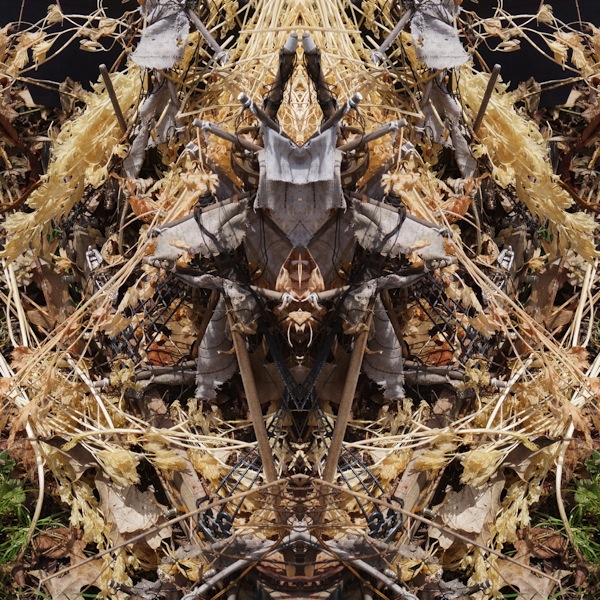
My symmetry experiments continue. This is a manipulated photo from the set-up in the garden, a decaying model three master, that I’ve been using to generate source material for the experiments for the past year.
Here’s the first keeper from the experimental series, from last summer.
Filed under visual experiments, my art
Goodbye Mr. Trane

The last photo of my car Coltrane and me, minutes before departing for a Suburu dealer in Wickliffe to trade it in as downpayment on my wife’s new car. I took over her car, now named Booker (after saxophonist Booker Ervin.)
I’ve always named my cars. There has been a bunch of ’em, even so while including driving Coltrane to just shy of 97,000 miles, and, putting 148,000+ miles on Monk, an 1984 Honda Accord. I’ve owned or co-owned cars names Ella, Betty,Duke, and Miles.
Coltrane, a 2000 Civic, was the first new car I ever owned. The funny Coltrane the car story is about the trouble the sales person had in 2000, finding a new 5 speed Civic with just a radio/cassette player. I told him right from the beginning,
Basically, for me, a car is a sound system that can also go from point A to point B.
Filed under personal


